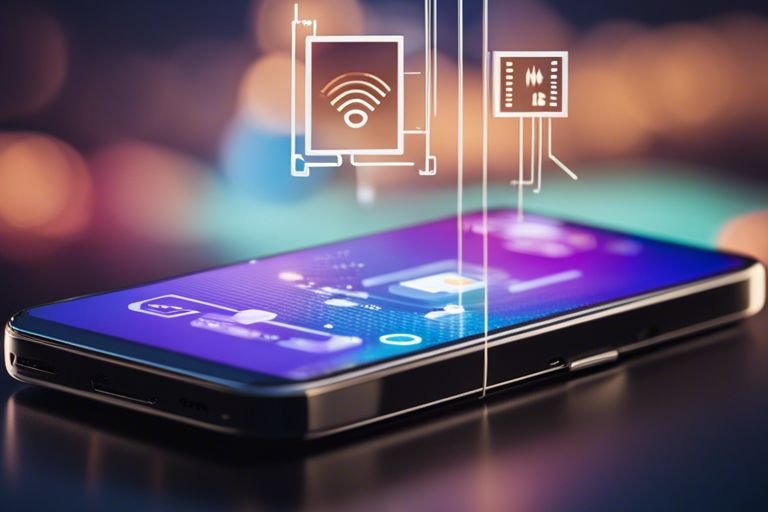
Most tech-savvy individuals are familiar with traditional SIM cards, but the emerging technology of eSIM is reshaping the landscape of smartphone connectivity. In this blog post, we will probe into the latest trends in smartphone connectivity, comparing eSIM versus SIM cards. From the advantages and drawbacks of each to the future implications for consumers and the mobile industry, we will explore the evolving world of smartphone connectivity options. Stay ahead of the curve with the latest insights on the eSIM revolution.
The Evolution of Smartphone Connectivity
From Physical SIM Cards to eSIM Technology
One of the biggest advancements in smartphone connectivity has been the transition from physical SIM cards to eSIM technology. While traditional SIM cards required physical insertion and removal, eSIMs are embedded in the device, allowing for easier switching between carriers and plans.
The Rise of eSIM: A New Era in Connectivity
For the modern smartphone user, eSIM represents a new era in connectivity. This technology offers greater flexibility, allowing users to manage multiple numbers and data plans on a single device. With eSIM, users can easily switch between carriers without the hassle of physical SIM cards.
Connectivity has never been more seamless than with the advent of eSIM technology. Users can now enjoy the convenience of activating new plans or switching carriers with just a few taps on their smartphone. This shift towards eSIM is revolutionizing the way we stay connected in a fast-paced digital world.
ESIM vs. SIM Cards: Key Differences
Physical vs. Digital: The Pros and Cons
Digital transformation in the smartphone industry has brought about the shift from traditional SIM cards to the advanced eSIM technology. Here are the key differences in the pros and cons of physical SIM cards versus digital eSIMs:
| Physical SIM Cards | Digital eSIMs |
| Require physical swapping | Embedded in the device, no need for swapping |
| Prone to damage or loss | Secure and cannot be removed |
| Limitation on storage space for contacts | More room for additional services |
Compatibility and Interoperability Issues
One of the key considerations in the debate between eSIMs and traditional SIM cards is the issue of compatibility and interoperability. While physical SIM cards are universally compatible with most devices, eSIM technology may face challenges in certain markets and with older devices.
Differences
ESIM and SIM cards offer different approaches to connectivity, with eSIMs providing a more integrated and advanced solution, while traditional SIM cards offer simplicity and widespread compatibility. The choice between the two ultimately depends on the user’s specific needs and preferences.
The Benefits of ESIM Technology
Convenience and Ease of Use
One of the key advantages of ESIM technology is the convenience and ease of use it offers to smartphone users. With an eSIM, there’s no need to physically swap out SIM cards when changing mobile carriers or traveling internationally. Users can simply activate a new plan or switch carriers directly from their device, making the process seamless and hassle-free.
Increased Storage Capacity and Security
With eSIM technology, smartphones can potentially have increased storage capacity as there is no physical SIM card taking up space inside the device. Additionally, eSIMs offer enhanced security features such as remote provisioning and better protection against SIM card cloning or theft. This provides users with peace of mind knowing that their mobile connection is more secure.
Technology behind eSIMs ensures that sensitive information and user data are better protected, reducing the risk of unauthorized access or interception. As eSIMs become more prevalent in the smartphone market, users can expect to see continued advancements in security measures to keep their personal information safe and secure.
The Future of Smartphone Connectivity
Integration with Emerging Technologies
Not only is smartphone connectivity evolving with the introduction of eSIM technology, but it is also expected to integrate seamlessly with emerging technologies such as Internet of Things (IoT), augmented reality, and 5G networks. This integration will open up new possibilities for how we connect and interact with the world around us.
Potential Challenges and Limitations
An important consideration for the future of smartphone connectivity is the potential challenges and limitations that may arise. As we rely more on eSIMs and connected devices, issues such as data security, interoperability, and network coverage in remote areas may become more pronounced.
To address these challenges, continued collaboration between device manufacturers, network providers, and regulatory bodies will be imperative. Additionally, advancements in encryption technologies and network infrastructure will play a crucial role in ensuring the seamless and secure connectivity of the future.
To wrap up
Following this exploration of eSIMs and SIM cards, it is clear that both technologies have their unique benefits and limitations. While eSIMs offer convenience and flexibility, traditional SIM cards continue to provide wider compatibility and ease of use. As smartphone connectivity continues to evolve, it will be interesting to see how these technologies develop and whether one will eventually dominate the market. For now, users can enjoy the options provided by both eSIMs and SIM cards to stay connected in an ever-changing digital world.
